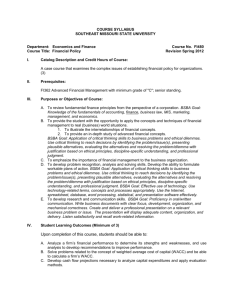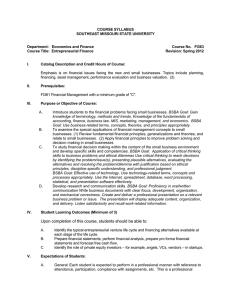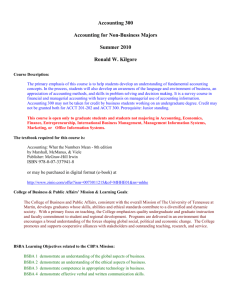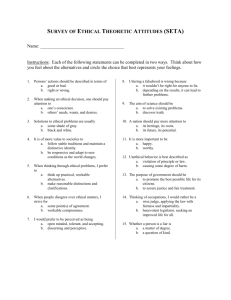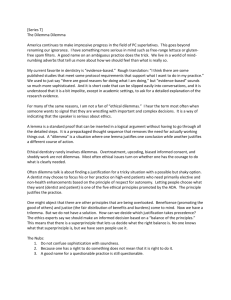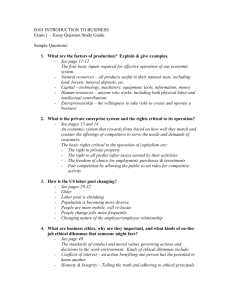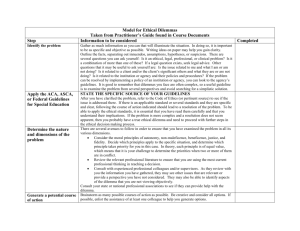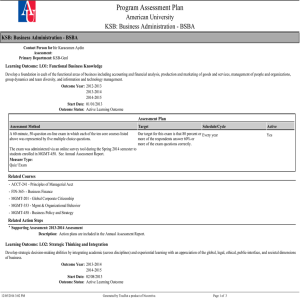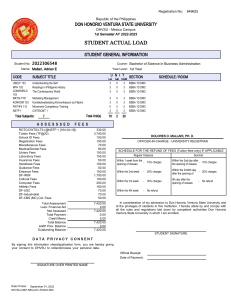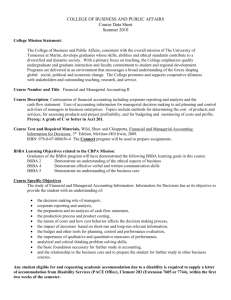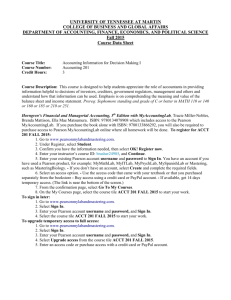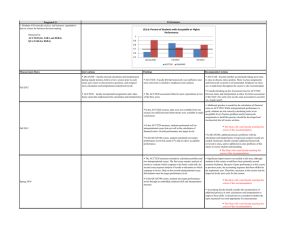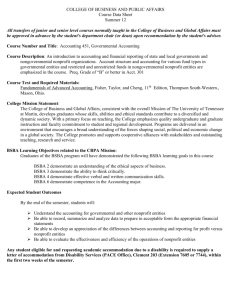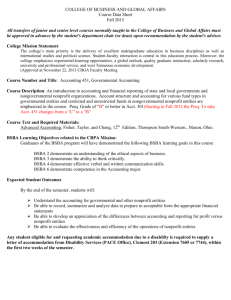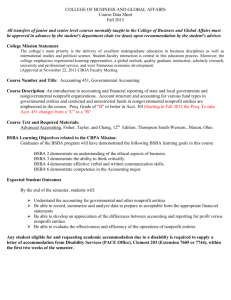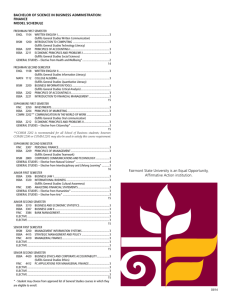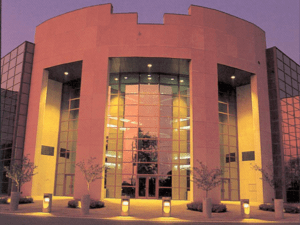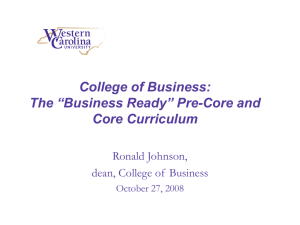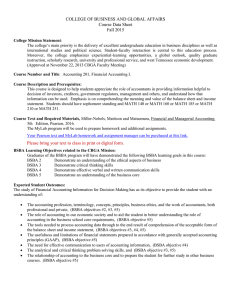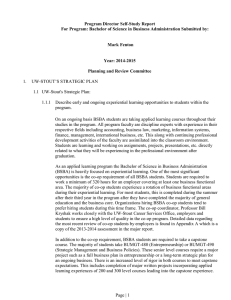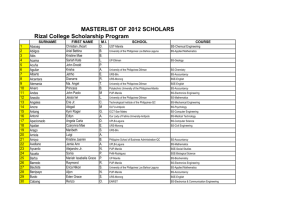EC351 Applied Economic Models - Southeast Missouri State
advertisement
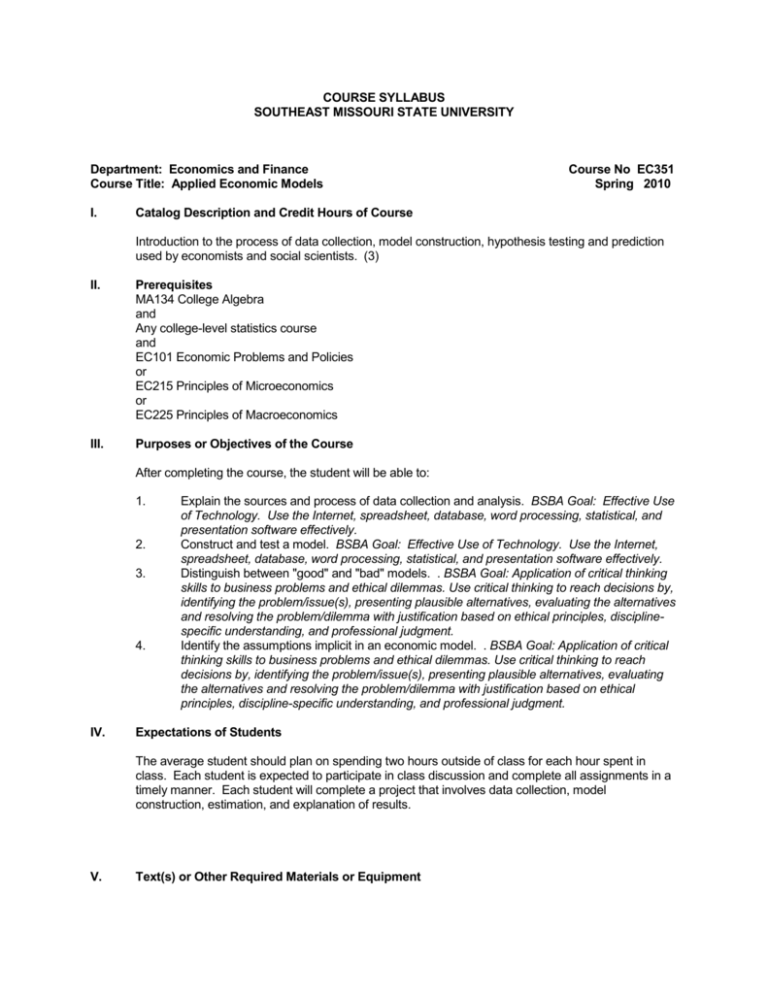
COURSE SYLLABUS SOUTHEAST MISSOURI STATE UNIVERSITY Department: Economics and Finance Course Title: Applied Economic Models I. Course No EC351 Spring 2010 Catalog Description and Credit Hours of Course Introduction to the process of data collection, model construction, hypothesis testing and prediction used by economists and social scientists. (3) II. Prerequisites MA134 College Algebra and Any college-level statistics course and EC101 Economic Problems and Policies or EC215 Principles of Microeconomics or EC225 Principles of Macroeconomics III. Purposes or Objectives of the Course After completing the course, the student will be able to: 1. 2. 3. 4. IV. Explain the sources and process of data collection and analysis. BSBA Goal: Effective Use of Technology. Use the Internet, spreadsheet, database, word processing, statistical, and presentation software effectively. Construct and test a model. BSBA Goal: Effective Use of Technology. Use the Internet, spreadsheet, database, word processing, statistical, and presentation software effectively. Distinguish between "good" and "bad" models. . BSBA Goal: Application of critical thinking skills to business problems and ethical dilemmas. Use critical thinking to reach decisions by, identifying the problem/issue(s), presenting plausible alternatives, evaluating the alternatives and resolving the problem/dilemma with justification based on ethical principles, disciplinespecific understanding, and professional judgment. Identify the assumptions implicit in an economic model. . BSBA Goal: Application of critical thinking skills to business problems and ethical dilemmas. Use critical thinking to reach decisions by, identifying the problem/issue(s), presenting plausible alternatives, evaluating the alternatives and resolving the problem/dilemma with justification based on ethical principles, discipline-specific understanding, and professional judgment. Expectations of Students The average student should plan on spending two hours outside of class for each hour spent in class. Each student is expected to participate in class discussion and complete all assignments in a timely manner. Each student will complete a project that involves data collection, model construction, estimation, and explanation of results. V. Text(s) or Other Required Materials or Equipment Studenmund, A. H. 2011. Using Econometrics, A Practical Guide, Addison-Wesley. VI. Course Outline 1. 2. 3. 4. 5. Class Periods Introduction and Purpose of Course a. The Research Project b. Time Series and Cross-Section Data Sets c. Sources of Data A Brief Review of Statistics a. Measures of central tendency and dispersion i. mean, median, mode ii. Variance, standard deviation b. Distribution Functions and their statistics i. t and z statistics ii. F-statistic iii. Chi-square statistic c. Hypothesis testing d. Causality vs. Correlation e. Bayes Theorem Regression Analysis a. Ordinary least squares-Two Variables b. The multiple regression model c. Prediction and Confidence Intervals d. Violations of the assumptions i. Heteroscedasticity ii. Autocorrelation iii. Simultaneous Equation Bias Data Transformations a. Logarithmic Transformation b. First Differencing c. Dummy Variables d. Lagged Variables Applied Models (The following are examples; actual models are to be chosen by instructor) a. Microeconomic Models i. The Production Function ii. The Cost Function iii. The Profit Function iv. Systems of Demand Functions Price Elasticity Income Elasticity Cross-price Elasticity b. Macroeconomic Models i. Growth Models ii. Consumption Function iii. Investment Function iv. Demand for Money c. Economic Models of Social Issues i. Energy and the environment ii. immigration iii. education iv. retirement v. discrimination vi. voting vii. crime 1 5 21 3 15 VII. Basis of Student Evaluation Tests: Project: Homework 40% 40% 20%
